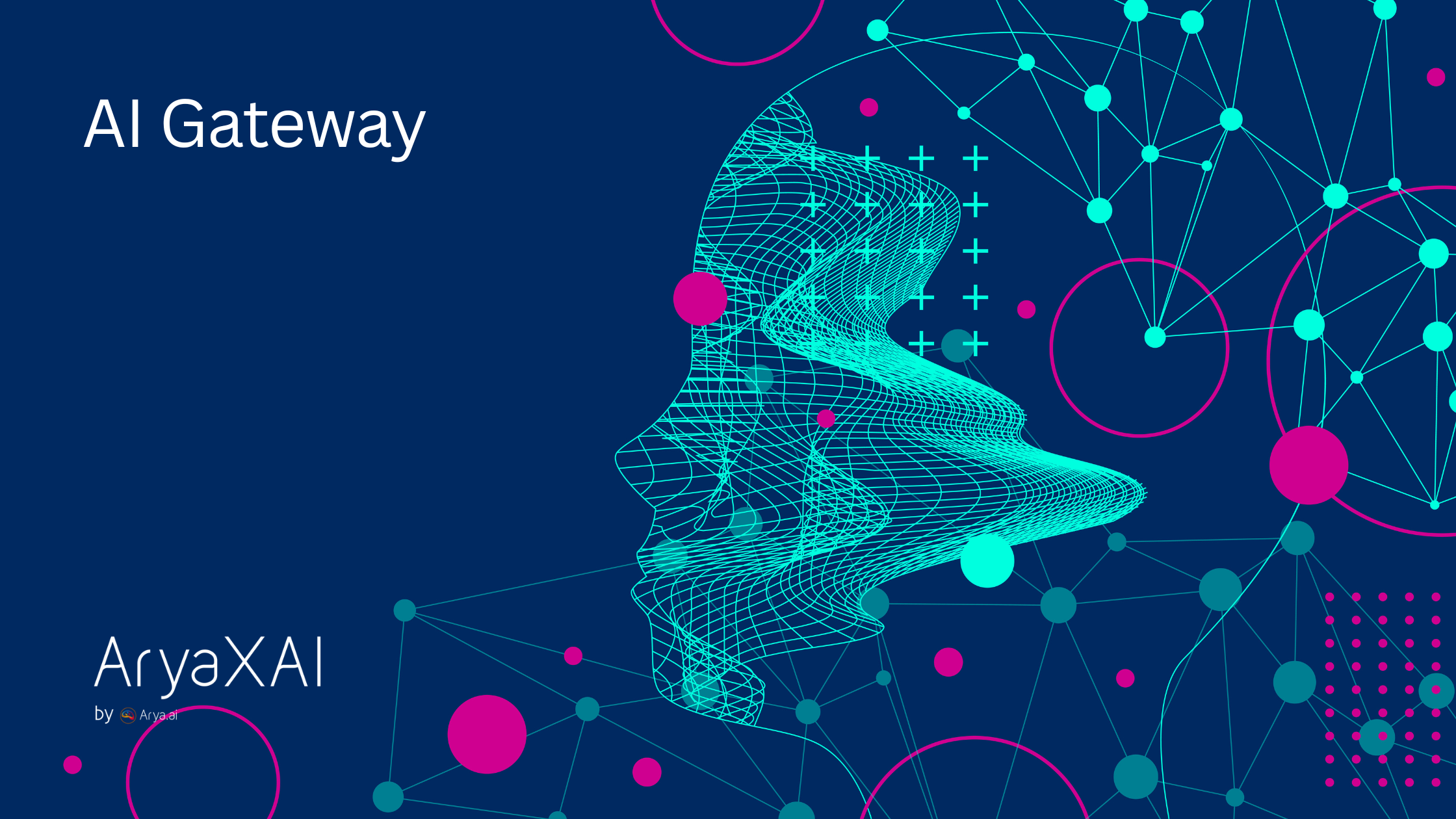California AI Transparency Act (SB 942): A Comprehensive Breakdown
June 24, 2025
.png)
The California AI Transparency Act (SB 942) enacted on September 19, 2024, and set to be enforced beginning January 1, 2026, marks a historic milestone in U.S. AI regulation. As generative AI systems such as large language models (LLMs) and image generators become increasingly accessible and influential, SB 942 introduces groundbreaking legal standards for AI transparency, accountability, and ethical deployment. This Act is a crucial step towards fostering responsible AI.
This AI regulation specifically targets any organization offering public-facing generative AI systems in California that serve more than 1 million monthly users over a 12-month period. California’s leadership in AI policy sets a new benchmark for data privacy AI, AI-generated content detection, consumer rights, and responsible AI development. This blog offers an in-depth breakdown of the legislation, its scope, requirements, business impact, comparative analysis, and compliance roadmap as well as its broader significance in shaping AI governance in the United States. This directly addresses ethical AI considerations and sets new Ethical AI Practices.
Understanding the California AI Transparency Act (SB 942): Key Mandates for Generative AI
SB 942 is a state-level AI legislation designed to bring clarity, accountability, and traceability to the rapidly expanding world of generative artificial intelligence. At its core, the law mandates that all AI-generated content must include explicit disclosures, and businesses must provide public AI detection tools. This ensures AI transparency for AI algorithms at the point of output.
The Act aims to combat AI risks related to deepfakes, disinformation, privacy violations, and misuse of AI systems by giving users the ability to identify and verify AI-generated media. It also emphasizes that organizations are responsible for the ethical deployment of these technologies and must ensure that such AI systems do not compromise societal trust or democratic integrity. This proactive measure establishes clear AI for compliance requirements.
SB 942's Core Provisions: Scope, Disclosure, and Detection Requirements
The California AI Transparency Act (SB 942) lays out clear directives for AI transparency and accountability.
1. Scope of Application: Which Generative AI Systems Are Covered?
SB 942 applies to any entity that:
- Offers publicly accessible generative AI systems to users in California.
- Has over 1 million unique monthly users within any 12-month period.
This broad scope includes large language models (LLMs), AI-powered chatbots, creative content platforms, AI companions, and other consumer-facing GenAI applications. Both nonprofit and commercial organizations fall under its jurisdiction. This wide net ensures that tech giants and rapidly growing startups alike are covered, preventing regulatory loopholes and ensuring the AI law scales with industry growth, reinforcing the need for adaptable AI governance.
2. AI Content Detection Tool Requirement: Enabling Public Verification
Companies must:
- Develop and release a publicly accessible AI detection tool.
- Ensure detection works across text, image, audio, and video formats.
- Enable real-time or near real-time detection.
- Make it free to access for end users.
This AI detection tool allows the public to verify the provenance of digital content, thereby building trust in AI-generated material. Businesses will be expected to uphold performance benchmarks for accuracy, accessibility, and responsiveness. This is a direct measure to combat AI risks like disinformation and deepfakes, pushing for Explainable AI compliance in identifying generative outputs.
3. Mandatory AI Disclosure Notices: Ensuring Clear Identification
Any content created by an AI system must include a clear, visible, and understandable disclosure such as:
- Text: "Generated by AI" line at the beginning or end.
- Audio: Audible notice at the start.
- Video: Persistent on-screen watermark.
- Image: Overlaid visual watermark or tag.
Disclosures must be non-avoidable; hidden metadata or tooltips do not qualify. These standards ensure consumer rights are protected and that AI systems operate in a transparent, ethical, and user-first manner. This is central to AI ethics and responsible AI.
Why SB 942 is Crucial: Fostering AI Transparency and Accountability
SB 942 is more than just a labeling requirement; it implicitly advocates for broader explainable AI practices and robust AI governance.
Promoting Explainable AI (XAI) and Model Transparency
SB 942 not only mandates content labeling but implicitly advocates for broader explainable AI practices. This includes the implementation of:
- Transparent decision-making logic within generative models.
- Traceable output provenance mechanisms to track model behavior.
- Public interfaces that clarify when and how AI was used to generate a given output.
In high-risk AI applications such as healthcare (diagnostics), finance (AI in credit risk management, AI credit scoring, explainable AI in credit risk management), and law enforcement (facial recognition), where explainability can mean the difference between trust and backlash, this regulatory pressure is accelerating the adoption of auditable, human-centric AI systems. This also pushes research and development in areas like interpretable neural networks, post hoc explanation tools, and natural language justifications from LLMs. This supports Explainable AI compliance and aligns with ethical AI considerations.
Impact on Generative AI Providers: Redefining Product Engineering for Compliance
For tech giants and AI platform providers, SB 942 represents a fundamental product engineering challenge. These companies must:
- Restructure their model outputs to support always-on, contextual disclosures.
- Incorporate real-time watermarking, text-based labeling, or audio prompts across all media channels.
- Build or refine AI detection tools that are accurate, free to use, and consumer-accessible.
This change forces cross-functional coordination between compliance, engineering, design, and legal teams. Moreover, it sets a precedent that may soon be mirrored by other states and countries, potentially creating a ripple effect in global AI governance. This requires robust AI risk management to adapt to evolving AI regulation.
Content-Specific Disclosure Guidelines: Ensuring AI Transparency Across Formats
The law thoughtfully addresses format diversity in GenAI outputs:
- Text: Inline banners or headers/footers must clearly indicate AI authorship.
- Audio: Disclaimers must be audibly presented at the beginning of any sound-based content.
- Video: Persistent watermarks or screen text must remain visible throughout playback.
- Images: Static watermarks or overlay tags must not be removable or buried in metadata.
This standardization pushes AI platform providers toward media-aware compliance frameworks, requiring generative systems to adapt output formatting based on context and content type. This is spurring AI innovation in digital watermarking, cryptographic tagging, and metadata-enhanced rendering. This helps address what is one challenge in ensuring fairness in generative AI regarding content provenance and AI risks from misinformation.
Model Monitoring and AI Compliance: Beyond Disclosure for Robust Governance
Beyond disclosure, SB 942 implicitly demands a robust backend for AI governance and AI compliance:
- Continuous model auditing to detect anomalies or content misclassification. This is a critical aspect of AI auditing.
- Storage and versioning systems for traceable AI outputs.
- Incident tracking systems to log and report compliance breaches.
- Regulatory communication workflows to respond to investigations or public complaints.
For enterprises, this demands the development of centralized AI governance dashboards, enhanced ML observability, and compliance-ready pipelines capable of producing audit trails and real-time AI safety feedback. This supports comprehensive AI risk management and AI for Regulatory Compliance.
Comparing SB 942 and the EU AI Act: Different Paths to AI Regulation
The EU AI Act categorizes AI systems by risk level, prescribing compliance obligations accordingly, including mandatory conformity assessments, enforcement penalties, and registration in public databases. It represents a top-down, broad-spectrum AI regulation approach for AI governance.
In contrast, SB 942:
- Empowers users first: by mandating transparency tools over punitive enforcement, fostering more direct public accountability.
- Avoids overregulation: focusing on content behavior and user interaction rather than underlying AI architecture, promoting AI innovation.
- Balances innovation and accountability: by supporting open access to tools that build public trust without constraining model capabilities prematurely.
While the EU focuses on AI risk mitigation through top-down regulatory control, California emphasizes participatory accountability for generative AI—allowing end-users, not just governments, to understand, detect, and challenge AI outputs. This hybrid model could significantly influence how future U.S. federal governance frameworks blend bottom-up transparency with top-down enforcement, shaping the entire Artificial Intelligence Risk Management Framework in the US.
Strategic Compliance Roadmap for Enterprises: Preparing for SB 942
To meet SB 942 requirements and build lasting AI transparency and trust, organizations should take a structured and proactive approach, integrating AI governance principles into their core operations. This is essential for AI for compliance.
- Conduct an AI Content Audit: Start with a full-spectrum inventory of all GenAI outputs—text, image, video, audio—across all customer touchpoints. Identify where content is created using LLMs or generative tools, whether disclosures are currently present, and the AI risk of user confusion or reputational damage from lack of AI transparency. This foundational step informs where detection, labeling, or redesign is necessary. This is a core part of AI auditing.
- Develop a Public AI Detection Tool: The detection tool must be user-friendly, cross-format (accurately detect all types of AI content), scalable (handle millions of requests with consistent performance), and continuously updated (as AI models evolve). This isn’t just a compliance step; it’s an opportunity to demonstrate ethical leadership and promote user trust.
- Integrate AI Disclosures into Pipelines: Your content generation workflows must be redesigned to embed disclosure logic at runtime. This includes middleware that attaches labels based on output type, fail-safes for missed tagging events, and modular pipelines that adapt to future regulatory changes without breaking production AI systems. Treat AI disclosure as part of the user experience, not merely a regulatory burden.
- Establish an AI Governance Task Force: A cross-functional team should be empowered to design, implement, and enforce disclosure and detection protocols, monitor model performance and user feedback, and communicate with external stakeholders (e.g., regulators, auditors, public). Incorporating ethics officers, security architects, and data privacy professionals ensures coverage of all AI risk surfaces. This helps operationalize Ethical AI Practices and AI governance aims.
- Implement Continuous Monitoring: Establish behavioral logs to track what the AI model produced, when, and why. Implement real-time alerts for content violations or tagging failures. Conduct internal audits via scheduled reviews and stress-tests for compliance systems. This robust model monitoring must evolve as fast as the AI models themselves. A static AI policy is a risky AI policy. This is critical for AI auditing and can inform AI in credit risk management or explainable AI in credit risk management needs.
Broader Implications for U.S. AI Governance: A Template for National AI Law
The California AI Transparency Act (SB 942) is more than a regional statute; it is a template for national AI legislation. By embedding transparency, explainability, and public tools into the regulatory framework, it signals a paradigm shift in AI accountability. This creates new ethical AI considerations for nationwide AI governance.
As federal legislators consider broader AI frameworks, SB 942 offers a scalable model that can harmonize with other AI regulations (like the EU AI Act, NIST AI Risk Management Framework, and emerging federal bills). Early adopters who prioritize compliance, fairness, and explainability will not only de-risk their operations but also build a competitive advantage in a trust-driven digital economy. This promotes responsible AI and impacts the entire Artificial Intelligence Risk Management Framework landscape.
Conclusion: AI Transparency as the Future of AI Compliance
SB 942 marks a defining moment in AI law and policy. It transforms AI transparency from a feature into a requirement, significantly raising the bar for how generative AI systems are governed and trusted. This is a critical development for AI for Regulatory Compliance.
Organizations that move now to align with this AI framework will be positioned as leaders in responsible AI, while those that delay may face both regulatory penalties and reputational fallout. In the age of generative AI, clarity, disclosure, and accountability aren't just legal obligations; they’re competitive imperatives that shape the future of AI governance best practices. AI for compliance is no longer optional.
SHARE THIS
Discover More Articles
Explore a curated collection of in-depth articles covering the latest advancements, insights, and trends in AI, MLOps, governance, and more. Stay informed with expert analyses, thought leadership, and actionable knowledge to drive innovation in your field.

Is Explainability critical for your AI solutions?
Schedule a demo with our team to understand how AryaXAI can make your mission-critical 'AI' acceptable and aligned with all your stakeholders.



.png)
















.png)



